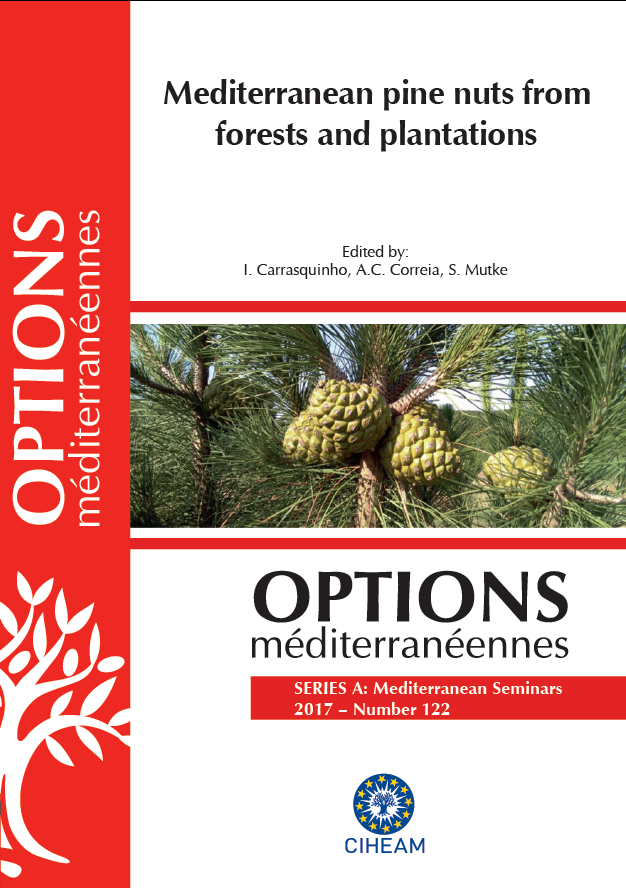| Article précédent | p. 85-89 | Article suivant |
Leptoglossus occidentalis damages on stone pine female reproductive structures
Stone pine (Pinus pinea) is an important forest species in, generating several ecological and economic benefits, particularly with fruit production (pine nuts). The detection of Leptoglossus occidentalis in since 2010 seems to be related to a significant decrease in pine cones production and productivity despite the difficulty to detect and quantify its damages. L. occidentalis is a sucking insect which feeds by inserting its stylet between the cone scales to reach the developing ovules of several conifer species. In order to understand which stone pine reproductive structures can be affected by the different instars of L. occidentalis, measurements were made on the insect stylet, body length and distances between the ovules and cone surfaces from flowering to cone maturation (1st, 2nd and 3rd year cones). The results show that L. occidentalis biological cycle overlap with all reproductive structures of stone pine. All development stages of L. occidentalis can damage the ovules, except the 1st instar on the 3rd year cones. In the 2nd year cones, cellular damages were also observed in the interior cone scale surface between scales. The stylet length and distance between the ovules and cone surface are determinant factors to allow insect feeding.
- [ Afficher ]
- [ Télécharger ]
- [ Exporter la citation ]
Vous pouvez télécharger la citation au format :
- [ Imprimer ]
-
Mots-clés
PINUS PINEACiter cet article
Pimpao M., Valdiviesso T., Trindade C.S., Naves P., Sousa E. Leptoglossus occidentalis damages on stone pine female reproductive structures. In : Carrasquinho I. (ed.), Correia A.C. (ed.), Mutke S. (ed.). Mediterranean pine nuts from forests and plantations. Zaragoza : CIHEAM, 2017. p. 85-89. (Options Méditerranéennes : Série A. Séminaires Méditerranéens; n. 122). 2. International Meeting on Mediterranean Stone Pine for Agroforestry : AgroPine2016, 2016/05/18-20, Oeiras (Portugal). http://om.ciheam.org/om/pdf/a122/00007246.pdf



